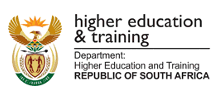The South African labour force is made up of 15 million employed and 7.5 million unemployed persons. Three quarters of the employed and 90% of the unemployed are from the African population group. Two thirds of the population is less than 34 years of age and one third are between the age of 15 and 34 years. Unemployment is particularly high amongst youth (15 to 34 years) and this is increasing as more young people join the labour force. Of the employed population, 20% has a tertiary qualification, 32% has completed secondary education, and close to half of the workforce do not have a grade 12 certificate. Sixty percent of the unemployed has less than a grade 12 certificate. This translates to 11.75 million of the labour force with less than a grade 12 certificate. The three main findings emanating from the Skills Supply and Demand in South Africa study relates to the economy and jobs, education and supply of skills and the employment sectors of graduates with a tertiary education qualification.
The finding related to the economy and jobs reveal a structural mismatch between labour demand and supply, in that the economy and labour market shows a demand for high skilled workers, but there is a surplus of low-skilled workers. The economy must respond to the twin challenge of participating in a globally competitive environment which requires a high skills base and a local context that creates low-wage jobs to absorb the large numbers who are unemployed or in vulnerable jobs.
Regarding education and skills supply, the education and skill level of the South African population is lower than most productive economies. A critical constraint for the post school education and training system and the labour market is the quality of basic education. Presently, each year around 140 000 grade 12 students complete the matriculation examination with a bachelor’s pass, and of these only around 50 000 students pass Mathematics with a score higher than 50%. The pool of students who can potentially access university and Science based TVET programmes is very small, in comparison to the skill demands in the country. Furthermore, completion rates at both universities and TVET colleges are less than desirable in that in 2014 there were 185 000 completers from the university sector, 21 000 NCV4 and 57 000 NATED 6 programme completers from the TVET sector. We acknowledge that access to school, universities and TVET colleges has improved. However quality remains elusive leading to low progression through institutions as well as low completion rates from schools, TVET colleges, and universities.
The analysis also revealed that nearly half of the Higher Education graduates are employed in the community, social and personal services sector, which is dominated by the public sector. The public sector positions offer graduates a good salary and conditions of service. Unfortunately this is distorting the labour market and not attracting graduates to the private sector. A high proportion of the Science and Engineering graduates, from both higher and technical and vocational education sectors, prefer to work in the financial services sector, as opposed to the manufacturing sector. SET qualifications are versatile and graduates will move into different fields of work. The implication for skills planning is that we need a high number of SET graduates than needed by the SET occupations.
We, therefore, recommend that the skills development focus should not only be on a small number of skilled people in the workplace, but also on the unemployed, the youth, low-skilled people, the marginalised, and those in vulnerable forms of employment, including the self-employed. The dilemma facing policy makers is how to respond to these diverse sets of development and occupational pathways, and decide how resources should be targeted for inclusive skills development. These imperatives may seem paradoxical, but all are essential to achieve a more inclusive growth and development trajectory.
Skills Supply and Demand in South Africa authored by Vijay Reddy, Haroon Bhorat, Marcus Powell, Mariette Visser and Fabian Arends http://lmip.org.za/document/skills-supply-and-demand-south-africa




